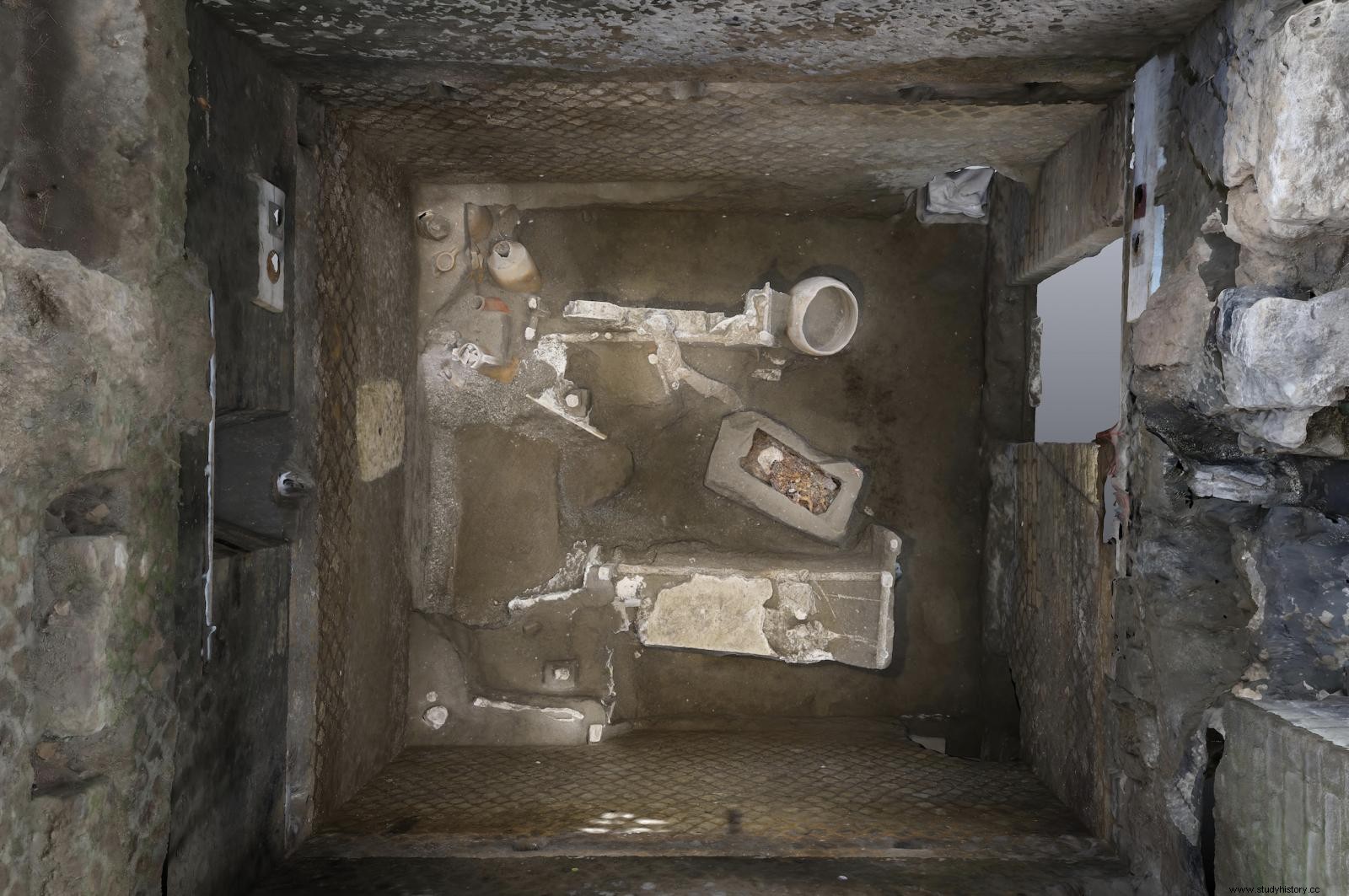Archaeologists have revealed the discovery of a 2000-year-old "slave room" in a villa destroyed during the eruption of Vesuvius.

The recently discovered chamber in Pompeii, in which a family of slaves probably lived.
This very rare find, according to archaeologists, was made during excavations of a villa in Civita Giuliana, an area just a few hundred meters northwest of the archaeological park of Pompeii, the famous site buried by the eruption. of Vesuvius in the year 79 AD
"Slave room" of Pompeii
The Italian Ministry of Culture announced on Saturday, November 6, 2021, "the discovery of the remains of a "slave chamber" . The space of approximately 16m 2 located near the villa's portico, houses three beds of roughly worked planks, one of which is the size of a child. Made of latticework of ropes and wood, you can still see the traces of the mats that covered them. Eight large amphoras, a ceramic pot, and a wooden chest make up the rest of the dwelling. Lit by a small opening, no trace of decoration was found there.

View from above of the "slave room" discovered in the villa of Civita Giuliana. Credits:Massimo Gravili / Archaeological Park of Pompeii.
"It's a window into the precarious reality of these people that rarely appears in historical sources, written almost exclusively by elite men," said Gabriel Zuchtriegel, the new general manager of the archaeological site of Pompeii, adding:This "unique testimony" on how "the weakest of ancient society lived (...) is certainly one of the most exciting discoveries of my life as an archaeologist" . "This room, thanks to its exceptional state of preservation, offers us a rare insight into the daily reality of slaves" , underlines the archaeological park in a press release.
Slaves in charge of maintaining the ceremonial chariot and the villa stable
"We must thank the particular dynamics of the eruption, since this room remained intact until the arrival of the pyroclastic flows, the portico held up, the lapilli ( the small volcanic stones projected during the eruption Ed), stopped before the threshold", clarified the director of the site.
This chamber was discovered at the very place where, in February 2021, a large four-wheeled ceremonial chariot (pillentum) had been unearthed, found in an excellent state of preservation. According to archaeologists, the room was probably occupied by slaves in charge of maintaining the ceremonial chariot and the stable of the villa. The wooden chest contained metal and fabric objects that appear to be part of the harnesses of the horses that pulled the chariot. A tank axis was also found on one of the beds. The tank had been discovered in a porch in front of a stable where, already in 2018, the remains of three equines had been cleared. These excavations are carried out as part of a particularly active anti-looting program in this sector of Pompeii. Studied since 2017, the villa of Civita Giuliana had been the target of systematic looting for years, according to archaeologists. This discovery also comes after that announced in November 2020, of the remains of two victims of the eruption described as that of a "master and his slave". Eventually, the villa will be accessible to the public.
Sciences et Avenir with AFP and the Parco Archeologico di Pompei.
